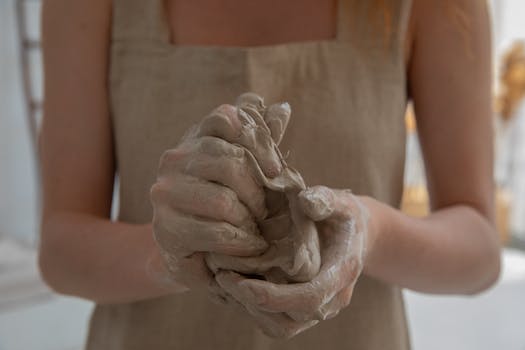How To Make Money Selling Artwork
“Unlock your artistic potential and turn your passion into profit with these proven tips for selling artwork.”
Introduction
Making money by selling artwork can be a great way to turn your passion into a profitable business. However, it can be challenging to know where to start. In this article, we will provide some tips and strategies on how to make money selling artwork.
Maximizing Profits: Tips for Pricing Your Artwork
Are you an artist looking to make a living from your passion? Selling artwork can be a great way to turn your creativity into a profitable business. However, pricing your artwork can be a tricky task. You want to make sure you are getting paid fairly for your time and talent, but you also want to make sure your prices are competitive enough to attract buyers. Here are some tips for pricing your artwork to maximize your profits.
1. Consider Your Costs
Before you can determine a fair price for your artwork, you need to consider your costs. This includes the cost of materials, as well as any overhead expenses such as studio rent or marketing expenses. You should also factor in the time it takes you to create each piece. This will help you determine a minimum price that covers your expenses and ensures you are making a profit.
2. Research Your Market
It’s important to research your market to get an idea of what other artists are charging for similar pieces. Look at the prices of artwork being sold in galleries, online marketplaces, and at art fairs. This will give you a sense of what buyers are willing to pay for artwork in your niche. Keep in mind that prices can vary depending on the location and the reputation of the artist.
3. Consider Your Experience and Reputation
Your experience and reputation as an artist can also play a role in determining your prices. If you are just starting out, you may need to price your artwork lower to attract buyers. As you gain more experience and build a reputation, you can gradually increase your prices. If you have won awards or have been featured in galleries or publications, this can also justify higher prices.
4. Don’t Undervalue Your Work
One of the biggest mistakes artists make is undervaluing their work. It’s important to remember that you are not just selling a physical object, but also your time, talent, and creativity. Don’t be afraid to charge what your work is worth. If you price your artwork too low, buyers may assume that it is of lower quality or that you are not a serious artist.
5. Offer Different Price Points
Not all buyers are looking to spend a lot of money on artwork. Offering different price points can help attract a wider range of buyers. Consider creating smaller pieces or prints that are more affordable, as well as larger, more expensive pieces for collectors. This can help you reach a larger audience and increase your sales.
6. Be Open to Negotiation
Finally, be open to negotiation. Some buyers may be willing to pay more for a piece they really love, while others may be looking for a deal. If a buyer makes an offer that is lower than your asking price, consider whether it is worth accepting. You may be able to negotiate a higher price or offer a discount on a future purchase.
Pricing your artwork can be a challenging task, but by considering your costs, researching your market, and valuing your work, you can set prices that maximize your profits and attract buyers. Remember to be flexible and open to negotiation, and don’t be afraid to adjust your prices as your experience and reputation grow. With the right pricing strategy, you can turn your passion for art into a successful business.
Building Your Brand: Marketing Strategies for Selling Art Online

Are you an artist looking to make some extra cash? Selling your artwork online can be a great way to do just that. However, with so many artists and platforms out there, it can be difficult to stand out and make sales. That’s why building your brand and implementing effective marketing strategies is crucial. Here are some tips to help you get started.
First and foremost, you need to have a strong online presence. This means creating a website or online portfolio that showcases your artwork. Make sure your website is easy to navigate and visually appealing. Include high-quality images of your artwork, a brief bio, and contact information. You can also consider adding a blog or social media links to further engage with your audience.
Speaking of social media, it’s a powerful tool for artists. Platforms like Instagram and Facebook allow you to reach a wider audience and connect with potential buyers. Make sure to post regularly and use relevant hashtags to increase visibility. Engage with your followers by responding to comments and messages. You can also consider running social media ads to target specific demographics.
Another way to build your brand is by participating in art shows and exhibitions. This not only allows you to showcase your artwork in person, but also network with other artists and potential buyers. Research local art events and apply to participate. Make sure to have business cards and promotional materials on hand to give out to interested parties.
When it comes to pricing your artwork, it’s important to be realistic. Do some research on similar pieces and their prices. Consider the time and materials that went into creating your artwork. Don’t undervalue your work, but also don’t overprice it. You want to make sales, but also maintain the value of your art.
Finally, make sure to provide excellent customer service. Respond to inquiries and orders in a timely manner. Package your artwork carefully and ship it promptly. Include a handwritten note or small gift to show your appreciation. Happy customers are more likely to recommend you to others and make repeat purchases.
In conclusion, building your brand and implementing effective marketing strategies is key to making money selling artwork online. Create a strong online presence, utilize social media, participate in art shows, price your artwork realistically, and provide excellent customer service. With dedication and hard work, you can turn your passion for art into a profitable business.
Finding Your Niche: Identifying and Targeting Your Ideal Customer
Are you an artist looking to make a living from your passion? Selling artwork can be a lucrative business, but it’s important to identify and target your ideal customer to maximize your profits. In this article, we’ll explore how to find your niche and reach the right audience for your art.
First, consider what type of art you create. Are you a painter, sculptor, photographer, or mixed media artist? What themes or subjects do you explore in your work? Understanding your unique style and perspective is key to finding your niche.
Next, think about who would be interested in your art. Are you drawn to a particular demographic or market? For example, if you create abstract paintings with bold colors, your ideal customer may be a young, urban professional with a modern aesthetic. If you specialize in nature photography, your target audience may be outdoor enthusiasts or environmentalists.
Once you’ve identified your niche and ideal customer, it’s time to reach out to them. Social media is a powerful tool for artists to showcase their work and connect with potential buyers. Consider creating a professional Instagram or Facebook page to share your art and engage with followers. Use relevant hashtags and participate in online art communities to expand your reach.
Another way to target your ideal customer is through art fairs and exhibitions. Research local events and apply to showcase your work. This is a great opportunity to meet potential buyers in person and receive feedback on your art. Make sure to have business cards and a portfolio on hand to leave a lasting impression.
If you’re interested in selling your art online, there are several platforms to choose from. Etsy is a popular marketplace for handmade and vintage items, including art. You can also create your own website or use a platform like Shopify to sell your art directly to customers. Make sure to include high-quality photos and detailed descriptions of your artwork to attract buyers.
Finally, pricing your artwork can be a tricky task. It’s important to consider the time and materials that went into creating each piece, as well as the demand for your art. Research similar artists and their pricing to get an idea of what the market will bear. Don’t undervalue your work, but also be realistic about what buyers are willing to pay.
In conclusion, finding your niche and targeting your ideal customer is essential to making money selling artwork. Use social media, art fairs, and online marketplaces to reach potential buyers and showcase your unique style. Remember to price your artwork appropriately and stay true to your artistic vision. With dedication and hard work, you can turn your passion for art into a successful business.
Diversifying Your Income: Exploring Alternative Revenue Streams for Artists
Are you an artist looking to make some extra cash? Selling your artwork can be a great way to diversify your income and turn your passion into profit. Here are some tips on how to make money selling artwork.
First, consider selling your artwork online. There are many websites and platforms that allow artists to sell their work directly to buyers. Some popular options include Etsy, Society6, and Redbubble. These sites take a commission on each sale, but they provide a convenient way to reach a large audience and make sales without having to handle the logistics of shipping and payment processing.
Another option is to sell your artwork at local art fairs and markets. These events provide a great opportunity to showcase your work and connect with potential buyers. Look for events in your area and apply to participate. Be sure to have a variety of pieces available at different price points to appeal to a range of buyers.
You can also consider selling your artwork through galleries or art dealers. This can be a more challenging route, as galleries typically take a larger commission on sales and may be selective about the artists they work with. However, if you are able to secure a gallery or dealer, it can provide valuable exposure and credibility for your work.
In addition to selling your artwork directly, you can also explore other ways to monetize your artistic skills. For example, you could offer art classes or workshops, sell prints or merchandise featuring your artwork, or even create custom pieces for clients. These alternative revenue streams can help supplement your income and provide additional opportunities to showcase your work.
When it comes to pricing your artwork, it can be challenging to find the right balance between affordability and profitability. Consider factors such as the cost of materials, the time and effort required to create each piece, and the demand for your work. It may be helpful to research the prices of similar pieces by other artists to get a sense of what the market will bear.
Finally, be sure to promote your artwork and your brand through social media and other marketing channels. Share photos of your work, behind-the-scenes glimpses of your creative process, and updates on upcoming events or sales. Building a strong online presence can help you reach a wider audience and attract more buyers.
In conclusion, there are many ways to make money selling artwork. Whether you choose to sell online, at local events, through galleries, or through alternative revenue streams, the key is to be creative, persistent, and strategic in your approach. With a little effort and ingenuity, you can turn your artistic passion into a profitable business.
Collaborating for Success: Partnering with Other Artists and Businesses to Increase Sales
Are you an artist looking to make a living from your passion? Selling artwork can be a challenging task, but collaborating with other artists and businesses can help increase your sales and exposure. Here are some tips on how to collaborate for success.
Firstly, consider partnering with other artists to create a joint exhibition. This can be a great way to showcase your work alongside other talented artists, and attract a wider audience. Collaborating with other artists can also help you learn new techniques and styles, and gain inspiration for future projects. Make sure to choose artists whose work complements your own, and who share a similar vision and aesthetic.
Another way to collaborate with other artists is to create a series of works together. This can be a fun and creative way to explore new themes and ideas, and can also help you reach a wider audience. Consider partnering with artists who work in different mediums, such as painting, sculpture, or photography, to create a diverse and engaging series.
Collaborating with businesses can also be a great way to increase your sales and exposure. Consider partnering with local galleries, cafes, or shops to display your artwork. This can help you reach a wider audience, and also provide a platform for you to sell your work. Make sure to choose businesses that align with your values and aesthetic, and that have a strong customer base.
Another way to collaborate with businesses is to create custom artwork for them. This can be a great way to showcase your skills and creativity, and also provide a steady stream of income. Consider partnering with businesses that are looking for unique and personalized artwork, such as restaurants, hotels, or offices. Make sure to communicate clearly with the business about their needs and expectations, and provide them with a portfolio of your work.
Finally, consider collaborating with other artists and businesses on social media. This can be a great way to reach a wider audience and gain exposure for your work. Consider partnering with other artists to create a social media campaign, or collaborating with businesses to showcase your work on their social media channels. Make sure to use relevant hashtags and engage with your followers to build a strong online presence.
In conclusion, collaborating with other artists and businesses can be a great way to increase your sales and exposure as an artist. Consider partnering with other artists to create joint exhibitions or series, and collaborating with businesses to display your work or create custom artwork. Don’t forget to leverage social media to reach a wider audience and build a strong online presence. With the right collaborations, you can turn your passion for art into a successful career.
Conclusion
Conclusion: Making money selling artwork requires a combination of talent, hard work, and business skills. Artists should focus on creating high-quality pieces that appeal to their target audience, building a strong brand and online presence, and utilizing various marketing and sales strategies to reach potential buyers. It’s also important to price artwork appropriately and be open to feedback and collaboration with customers. With dedication and persistence, artists can turn their passion for art into a profitable career.




